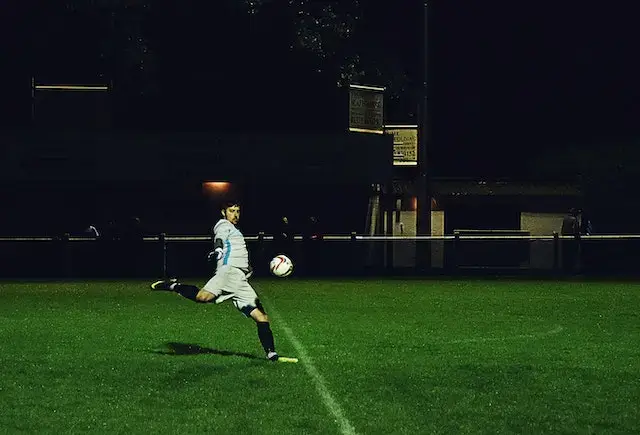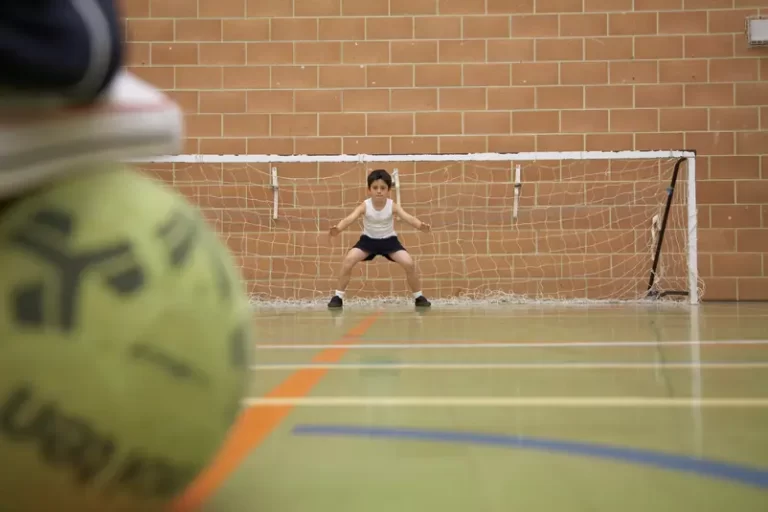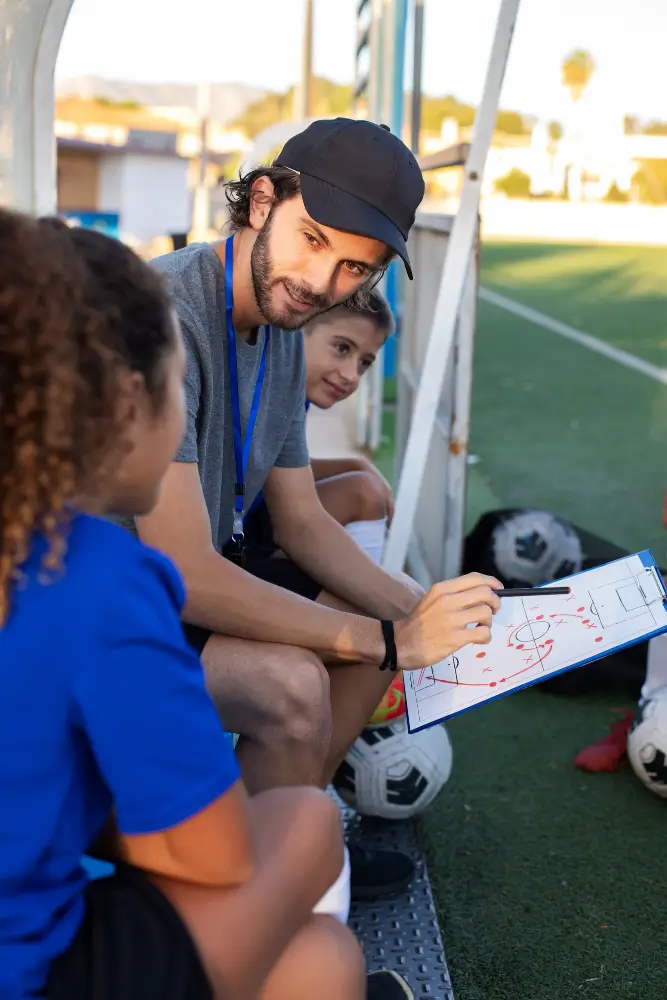How to be A Good Striker in Indoor Soccer
How to be A Good Striker in Indoor Soccer
As a striker, scoring goals in the fast-paced, thrilling environment of indoor soccer is crucial to your team’s success, and requires split-second decision-making. However, scoring goals requires careful development of striker skills. So today we will be discussing exactly that : tips and strategies on how to be a good striker in indoor soccer.
To become a decent indoor soccer striker, you need a combination of technical skills, physical fitness, and mental toughness. By practicing specific techniques and honing your skills, you can increase your chances of scoring goals and becoming a more effective scorer. These tips in the article below are good for players of all levels, whether you’re a seasoned pro or a newcomer to the game.
First, let’s have some pep talk. As a striker in indoor soccer, your attitude is everything. The way you approach training sessions, interact with teammates, and carry yourself on the field all contribute to your success. Here are some indoor soccer drills you can check out.
Engaging in purposeful practice is important. Remember, hard work beats talent, when talent doesn’t work hard.
Start small and work on one thing at a time. Go slowly to get the technique right, then increase speed while keeping the execution perfect. Set yourself goals and aim for 20 in a row done perfectly at maximum speed. If you can achieve this level of skill, it will become permanent. But if you fail at any point before 16, start again from one. This will help you build mental toughness and practice with purpose.
How To Be The Best Striker – Essential Skills
The basic skills needed for a goal scorer are the same as that of any other field position, so work on your touch, spend lots of time juggling, and keep yourself fit. As a striker, you will need to work more on shooting and accuracy, but to be good at shooting, you must first be good with the ball.
Some essential skills for strikers are:
- Speed and agility
- Ball control and dribbling skills
- Shooting accuracy and power
- Coordination with teammates
Tips on How to Improve As a Striker
- Improve your touch. Work on quick footwork and practice agility drills
- Practice shooting and finishing techniques
- Improve ball control through dribbling drills
- Develop good communication with your teammates
- Study and analyze game footage to improve decision-making
1. Improve your touch
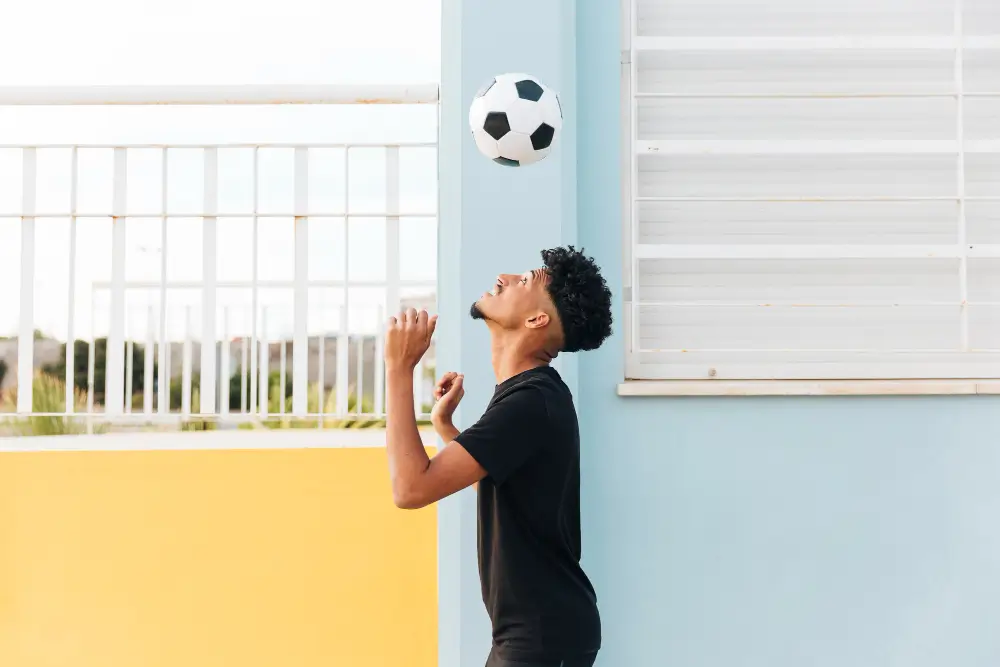
Touch is a skill that can be developed in many parts of the body, from using different angles on your feet to using your shoulders, thighs, or even your back. Here are some tips to help you improve your touch:
- Use both feet: Practice dribbling, passing, and shooting with both feet. This will help you become more versatile and unpredictable on the field.
- Control the ball with different parts of your foot: Experiment with using different parts of your foot, such as the inside, outside, and sole, to control the ball. This will give you more control over the ball in various situations.
- Juggle the ball: Juggling the ball with your feet is an excellent way to improve your touch and ball control. Start with a few juggles and gradually increase the number as you get more comfortable. Juggling is the art of keeping the ball off the ground using different parts of your body, including your feet, knees, chest, and head. Juggling helps improve your coordination, balance, and control over the ball.
To start juggling, begin by dropping the ball and catching it with your foot, and then progress to juggling the ball with your feet. Try to increase the number of touches you can make on the ball without it touching the ground. Once you’ve mastered juggling with your feet, you can move on to using other parts of your body like your knees, chest, and head. Juggling can be a fun way to improve your touch, and it can be done anywhere, even in your backyard or living room.
- Practice first touch drills: Set up cones or other markers and practice receiving the ball and taking your first touch in different directions.
2. Practice shooting and finishing techniques
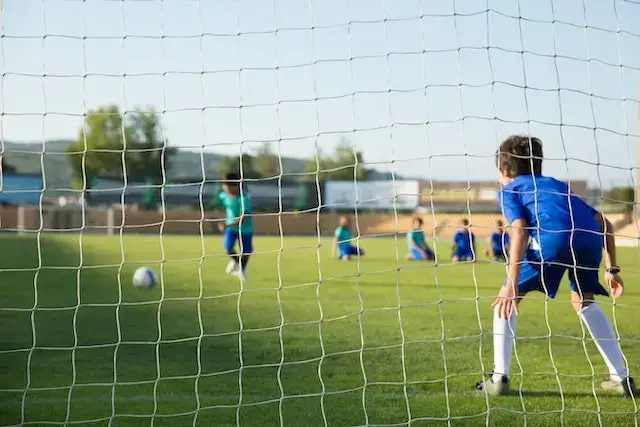
Note down any drills your coach asks you to do if you hold the striker position in your team. Work hard on these. There are several exercises that I make my strikers do to help improve their finishing technique as a striker:
Shooting practice: This involves practicing different types of shots such as one-touch shots, volleys, half-volleys, and shots on the turn. Practice these shots from different angles and distances, and with both feet.
Cross and finishing drills: This involves practicing finishing from crosses delivered by a teammate or coach. You can practice different types of finishes such as headers, volleys, and first-time shots.
Wall passes and finishing drills: This involves practicing wall passes with a teammate or coach and then finishing the ball into the goal. You can practice different types of finishes such as one-touch shots, volleys, and chip shots.
Reaction drills: Have a teammate or coach throw a ball towards you while you stand facing away. Quickly turn around and take a shot on goal to improve your reaction time and shooting accuracy.
3. Improve ball control through dribbling drills
Dribbling drills, like One-on-one drills: This involves setting up a one-on-one situation with a goalkeeper or a defender, and practicing different finishing techniques such as chipping, low driven shots, and curling shots.
These drills can improve your finishing technique as a striker and increase your ability to score goals in a variety of situations.
4. Develop good communication with your teammates
Effective communication can help you understand and anticipate your teammates’ actions, leading to a better understanding of their strengths and weaknesses. This can help you build partnerships with your teammates and create a stronger, more cohesive team. Build a shared language and understanding of the game with your teammates. It will ease your way to scoring goals.
5. Study and analyze game footage to improve decision-making

Critically analyze game footages. Observe how other players position themselves, how they make runs, and how they control the ball. Game footage is a great way to get inspiration for your own team’s tactics and strategies. You may see a play or a formation that you could implement in your own team’s game plan.
If you are watching footage of your own game, review specific moments in the game where you were directly involved, such as scoring chances or defensive situations. Pay attention to your decision-making, positioning, and execution. Take notes on what you did well and what areas need improvement. It is a fun, relaxed way of learning, and I often try to take recordings of our games to watch later with my players.
Improve Your Strategy As A Striker
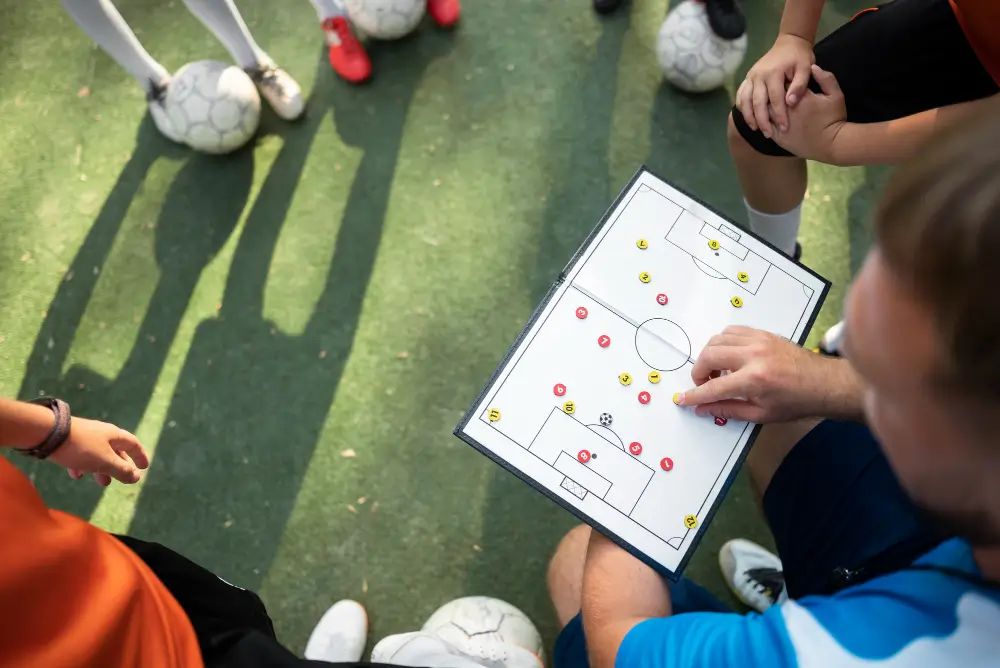
Understanding of the field is an essential skill for a striker. You need to be hyper aware of your surroundings and constantly on the lookout for openings. You should also be able to analyze the opposing team’s behavior and adjust your own accordingly.
Some things that your coach will likely be trying to teach you which can help you improve your strategy are:
- Understanding the field and adapting to the small space
- Use of body position and movement to create space
- Playing off the walls to create passing opportunities
- Anticipation and movement to read the game and anticipate opportunities
While in game, analyze the field, and ask yourself critical questions like these:
- What is the best position for myself to receive the ball and create scoring opportunities?
- Can I create space for myself and my teammates to move into?
- What kind of runs should I make to get past the defenders and into a scoring position?
- How can I work with my teammates to better coordinate our attacks?
- What can I do to vary my movements and keep the defenders guessing?
- How can I use my strengths to exploit the weaknesses of the opposing team’s defense?
Don’t consider your raw skill to be the only factor in scoring. Indoor soccer is a strategy game.
Improve Fitness To Be a Good Striker
Indoor soccer is far more fast-paced than the already fast game of soccer. Nearly everyone, except the goalkeeper, needs to be in running mode for the duration of the game. But a striker’s fitness and conditioning are crucial for success on the field. A striker needs to be able to make quick bursts of speed, change direction quickly, and have the endurance to play the full game.
Here are a few exercises you can do to improve your overall fitness:
- Use running and sprinting drills to build speed and endurance.
- Use exercises like squats, lunges, and plyometrics for building muscles. These will help you play more powerfully on the field.
- Mental fitness. Yup. Believe it or not, being in a healthy state of mind can drastically change your performance in any game. So, meditate, visualize, and employ positive self-talk to help improve your focus on the field. One of the reasons for the pep talks that we coaches love to give, is literally to lift your spirits before, during, and if needed, after the game.
Conclusion
The single most important tip for strikers during a match is to be patient and stay composed. Strikers can often feel pressure to score goals and may rush their chances, leading to missed opportunities. By staying patient and composed, you can wait for the right moment to make their move and take your shot. Additionally, maintaining good communication with their teammates and staying aware of your positioning on the field can also greatly improve a striker’s chances of success.
Hope you find these tips useful. Let us know in the comments! For additional tips you can read our blog. Also, we found this article by Golden Boot Striker Academy to be really well written and engaging. Do check it out if you want more on this topic. Here are some of our own articles on indoor soccer drills, and indoor soccer formations.
